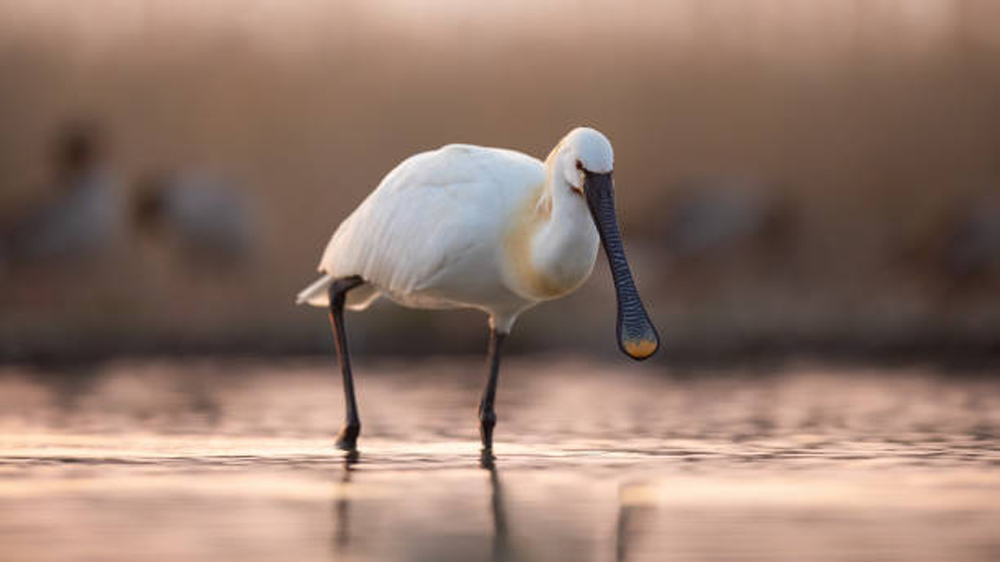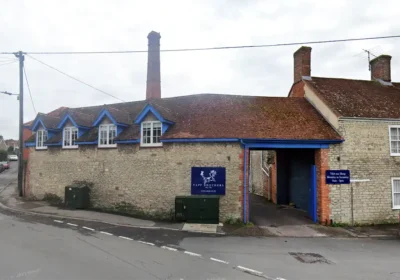by Susie Curtin.
BRIGHT sunshine and a biting wind greet me as I arrive at RSPB Arne, now part of the wider Purbeck Heath National Nature Reserve – an area where the birds and amphibians of this lowland heath are valued and protected. I have come here today to enjoy the flocks of winter waders, particularly the avocets and the spoonbills, and, of course, the light and atmosphere that can only be experienced here in this wild, open landscape beside the watery expanse of Poole Harbour.
Lowland heathlands are characterised as being under 300 metres above sea level. The soil is often comprised of sand and gravels, interspersed with peat and inky, amber-coloured pools. These, and the heathers, gorse, pines and birches, paint the landscape in vibrant hues. In summer, the heath has a slight Mediterranean feel, but not today under an icy blue sky and wispy winter light.
Following the trail, I soon find my favourite hide, tucked away in the woodland overlooking the reedbeds. From here, my eyes feast upon a pair of marsh harriers quartering low over the feathery fronds of champagne-coloured reeds. I can hear the haunting calls of curlew in the distance and the chatter of brent geese. Alone in this wild place, the problems of the world slip away. It is just me, the birds and the land.
Once the harriers are gone, I gather my belongings and make way towards Shipstal Point in search of the resident flock of spoonbill. Passing by an old oak tree, I watch as a tree creeper, beginning only a foot off the ground, silently edges up the trunk. His curved beak searching in between the masses of ivy for tiny insects. Such an exquisite, busy bird.
Beyond the oaks and pines, I am greeted by a forest of birch trees, their gleaming white bark and purple catkins looking resplendent against the blue sky. From here, the path heads out towards the hide that overlooks the saltmarsh and I hope provides a sighting of Arne’s growing flock of spoonbills.

RSPB Arne, now part of Purbeck Heath National Nature Reserve, is home to spoonbills. The birds have distinctive flat, spatula-type bills that sweep side to side as they feed on aquatic creatures in the shallows
Spoonbills are a genus of waders that can be found on every continent in the world except Antarctica. They are large white, heron-shaped birds with distinctive flat, spatula-type bills that sweep side to side as they feed on aquatic creatures in the shallows. In the summer they develop an exotic-looking feathery crest at the back of their heads and a patch of yellow feathers on their breasts.
I am in luck. Eight of them are huddled together like snow-white sentinels at the end of a thin, muddy spit. These are Eurasian spoonbills. Typically, they are asleep with their astonishing beaks hidden under their wings. The species is of European conservation concern. Although they bred in the UK in medieval times in East Anglia, they did not breed here for 300 years. Then in 2010 they returned, and we now have 29 breeding pairs with Poole Harbour hosting the largest flock in autumn and winter. I particularly love to watch them in flight when their necks and legs are fully extended, and you can see their black wingtips. Despite their slumber, I am delighted to see them. A perfect end to a perfect day.
As I make my way home, I recall that Thomas Hardy was a child of the Dorset heathlands. In The Return of the Native, he described the heath as “a harsh, unaltered land of sombre nature intensifying the sad hours of day and night”. That is certainly not a description I recognised today.
Dr Susie Curtin is a nature writer and qualitative researcher; wildlife travel blog at rewildingjourneys.com/; email curtin.susanna@gmail.com










Leave a Reply